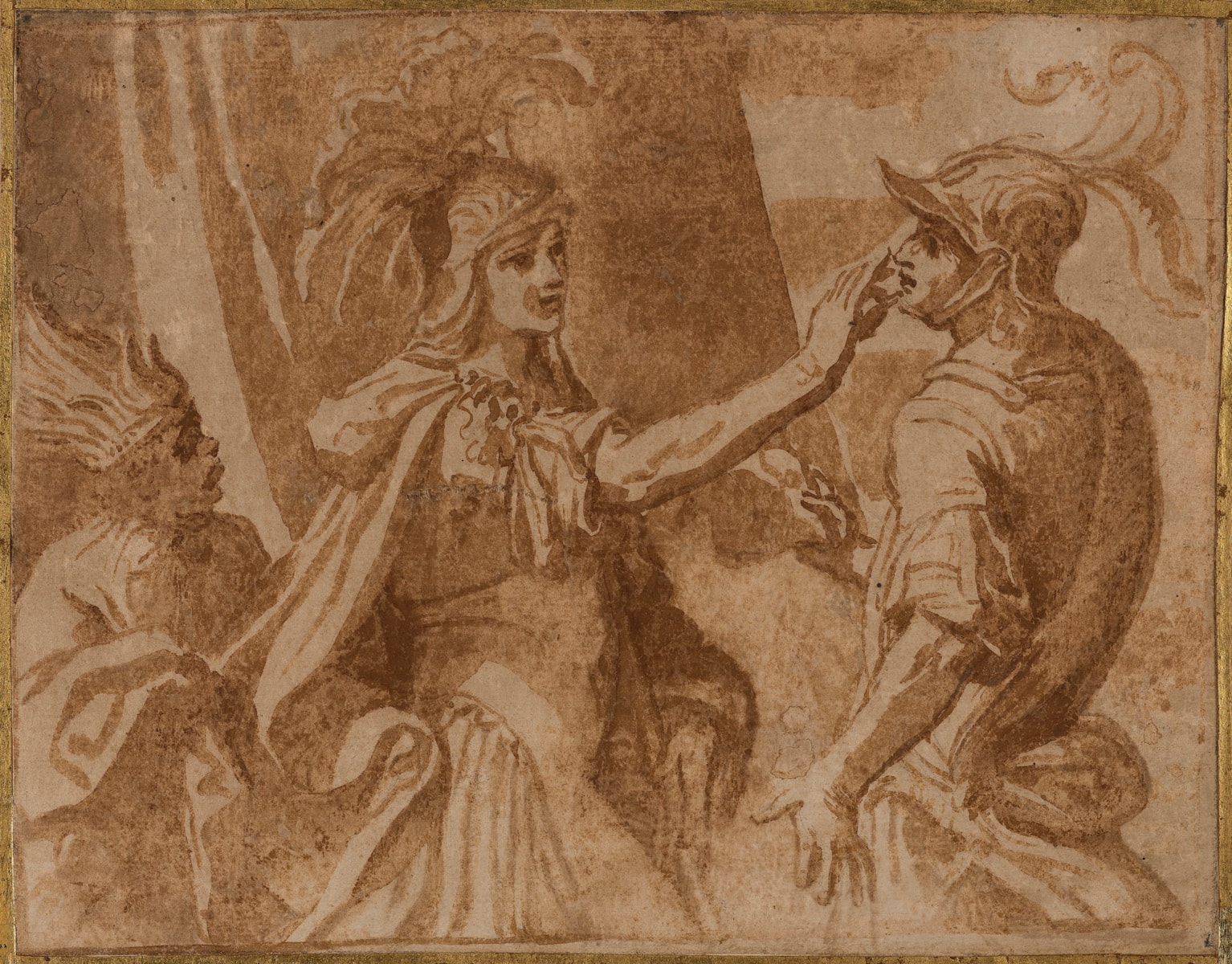
Elisabetta Sirani (Bologna 1638 - 1665)
Alexander the Great sealing the lips of Hephaestion with a ring
Description:
inscribed on mount: andrea Sirani No 146
brush and brown wash over traces of black chalk
190 x 245 mm
Provenance:
Private collection, Italy
Literature
Massimo Pulini, Il Diario di Elisabetta Sirani, Rimini, 2025, p. 262, no. 145.B.
Note:
A preparatory study for Elisabetta's late painting, Alexander the Great sealing the lips of Hephaestion with a Ring. The painting was executed in the last year of Elisabetta's short but very productive life; she having died at the age of twenty-seven. It was commissioned in 1664 by Duke Alessandro Pico II of Mirandola and is recorded in her diaries, which were fortuitously preserved and transcribed by Count Carlo Cesare Malvasia in his history of Bolognese art, Felsina Pittrice (1678). Although the whereabouts of the painting is currently unknown, its appearance is described by Elisabetta in her diary entry at the end of 1664, wherein it is twinned with a companion piece, still extant, of Alexander and the Delphic Sybil. The two compositions are matched, each containing the two central protagonists and a servant, with all figures shown at half length. In both compositions the figure of Alexander wears the same elaborate plumed helmet with an inlaid spiral pattern, likely a studio prop. The drawing is the sole surviving record of the lost painting’s full composition, and a rare example of male-male companionship depicted by a 17th century woman artist.
The technique perfectly illustrates Elisabetta's idiosyncratic approach to the art of drawing. It is executed in brush and brown wash over traces of black chalk. By using brush rather than pen, she is able to develop the flowing lines and pools of tone that give the drawing its spontaneity. It is a modern approach, and one that would define her drawing style in the 1660s, as exemplified by a comparable drawing at the RISD Museum, Rhode Island. Indeed, she achieved celebratory status as an artist; visitors to her studio would ask to watch her at work so that they could convince themselves a woman could achieve such marvels. Above all, it was the brush and ink drawings that inspired comment and gave her the distinction of being the first woman in Western art whose drawings were avidly collected. More than a hundred autograph sheets survive today, of which almost one third are in the Royal Collection at Windsor Castle.
Sirani’s choice of subject matter is noteworthy and equally original. Images of Alexander were rife in Italian painting from Veronese onwards, magnanimity in victory being the most popular representation. Elisabetta sought to reveal a different quality of his character, that is male fidelity and intimacy. She takes the story from Plutarch’s Parallel Lives [39.4-5], where Alexander shares a letter from his mother with Hephaestion, while offering his ring to kiss, an act laden with symbolic meaning signifying trust, silence and possibly intimating the pair’s romantic or erotic affection The letter can be seen here in Hephaestion's hand. It is one of the earliest depictions of the subject, with only two known surviving precedents; an engraving by Giulio Bonasone dated 1574, and a painting by the Roman artist Andrea Camassei from circa 1640.
Please contact us for a full catalogue entry.
